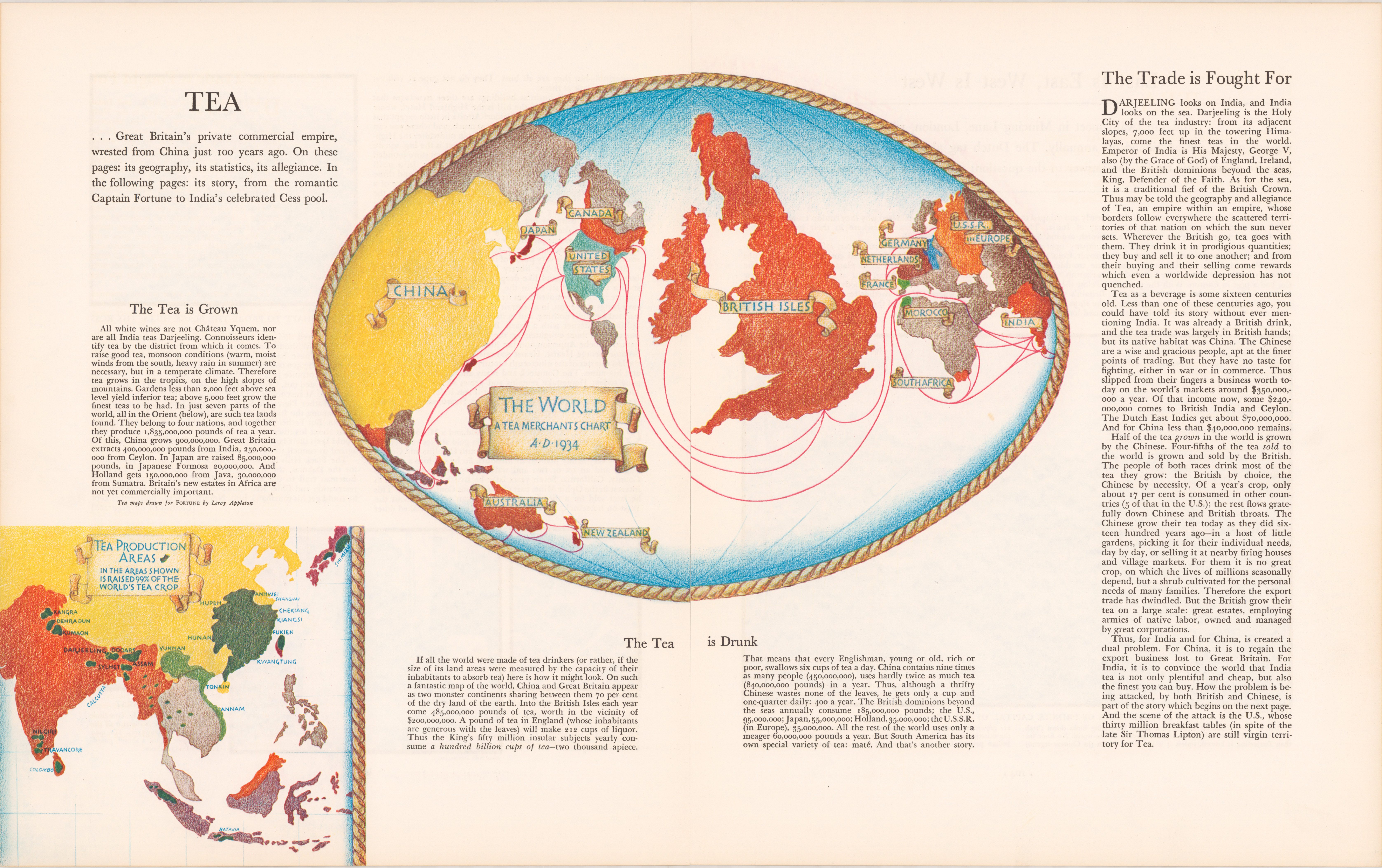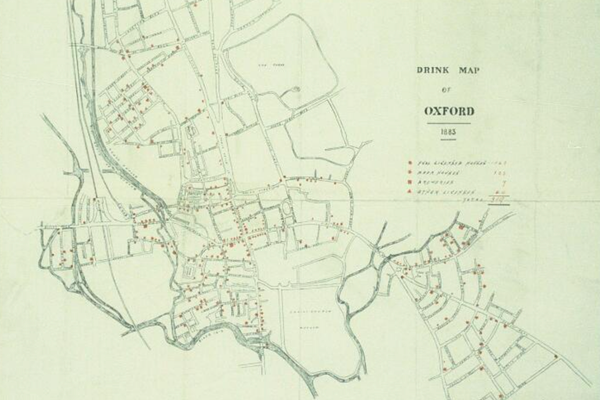This Map Proves Britain Loves Tea More Than Anyone Else
The British Isles desired to best China as the tea drinking capital of the world.

A section of “The Tea is Drunk” map. (Photo: PJ Mode/Cornell Digital Library)
George Orwell once wrote that tea was one of the mainstays of civilization in Britain. Tea, asserted Orwell, has the power to make one feel braver, wiser and more optimistic. The man spoke for a nation.
Tea is the United Kingdom’s national beverage, a representation of British character and a drink that transcends class. Bored, nervous, happy or sad? Have a nice of cup of tea. Sweating on a rare sunny day in July, have a brew. First night on vacation in Ibiza: tea. (Although Brits vow a “cuppa” never tastes quite the same abroad.) Tea for breakfast, tea for afternoon tea, and tea for tea (evening meal).

And this obsession is something British people are intensely proud of.

The Tea is Drunk. (Photo: PJ Mode/Cornell Digital Library)
They would certainly approve of this map, which resized countries according to how much tea their populations drank. Lo and behold, right in the middle are the British Isles. Called “The Tea is Drunk,” the map provided evidence for Britain’s self-coronation as tea-drinking royalty.
The map’s design made it easy to ignore the inconvenient fact that China, shown in yellow, actually consumed more tea at the time. As text under the map, published in 1934 by Fortune Magazine, explains, Britain consumed 485,000 pounds of tea per year. That’s one hundred billion cups of tea, or around six cups a day for each person, according to the map. The population of China was then nine times bigger than that of the U.K., and they drank roughly twice as much tea as the Brits did.
The author made a tenuous point about the cultural differences between the two: the Chinese drank tea as a necessity, the British by choice.

A tea farm in China. (Photo: Public Domain)
The map purports to demonstrate three parts of the tea drinking cycle. First, where tea grows, then where it is drunk, and lastly who controls the trade. Tea plants flourish in temperate climates with monsoon conditions that includes warm winds and heavy rain.
British people don’t just like to drink this beverage, mediate to it, or cry into it, they also liked to make money from it. Profits from the tea trade helped Britain build an empire that at one point colonized one third of the world. In 1934, the tea trade was an empire within an empire, says the map. “Where Britain goes, tea goes with them,” the text announces.
Red lines drawn onto the map represent the myriad routes that tea journeyed across the globe. At the time, the U.S. consumed 95,000 pounds of tea annually.

The humble cup of tea. (Photo: Nasir Khan/CC BY: SA 2.0)
And the map’s creators clearly put the ownership of the tea trade in British hands; Britain grows and sells four-fifths of the world’s tea. This skirts over the fact that Britain was growing and selling Indian tea, in India!
In the bottom lefthand corner, a smaller map shows where 99 percent of the tea in the world was grown, shaded in green. “The British grow their tea on a large scale: great estates employing native labor, owned and managed by great corporations,” the text reads. India remained a British colony until 1947.
The map was created at a challenging time for global trade, tea included. Soon after the 1929 Wall Street Crash, prices plummeted for growers and sellers in Asia. In 1933, tea companies in India, Sri Lanka (then Ceylon) and Indonesia (then the Dutch East Indies) formed a “cartel” and penned an agreement to lower output. The plan worked, and by 1934 prices had slowly started to increase.
The Tea is Drunk map is part of PJ Mode’s collection of Persuasive Maps at the Cornell Digital Library.
Map Monday highlights interesting and unusual cartographic pursuits from around the world and through time. Read more Map Monday posts.











Follow us on Twitter to get the latest on the world's hidden wonders.
Like us on Facebook to get the latest on the world's hidden wonders.
Follow us on Twitter Like us on Facebook